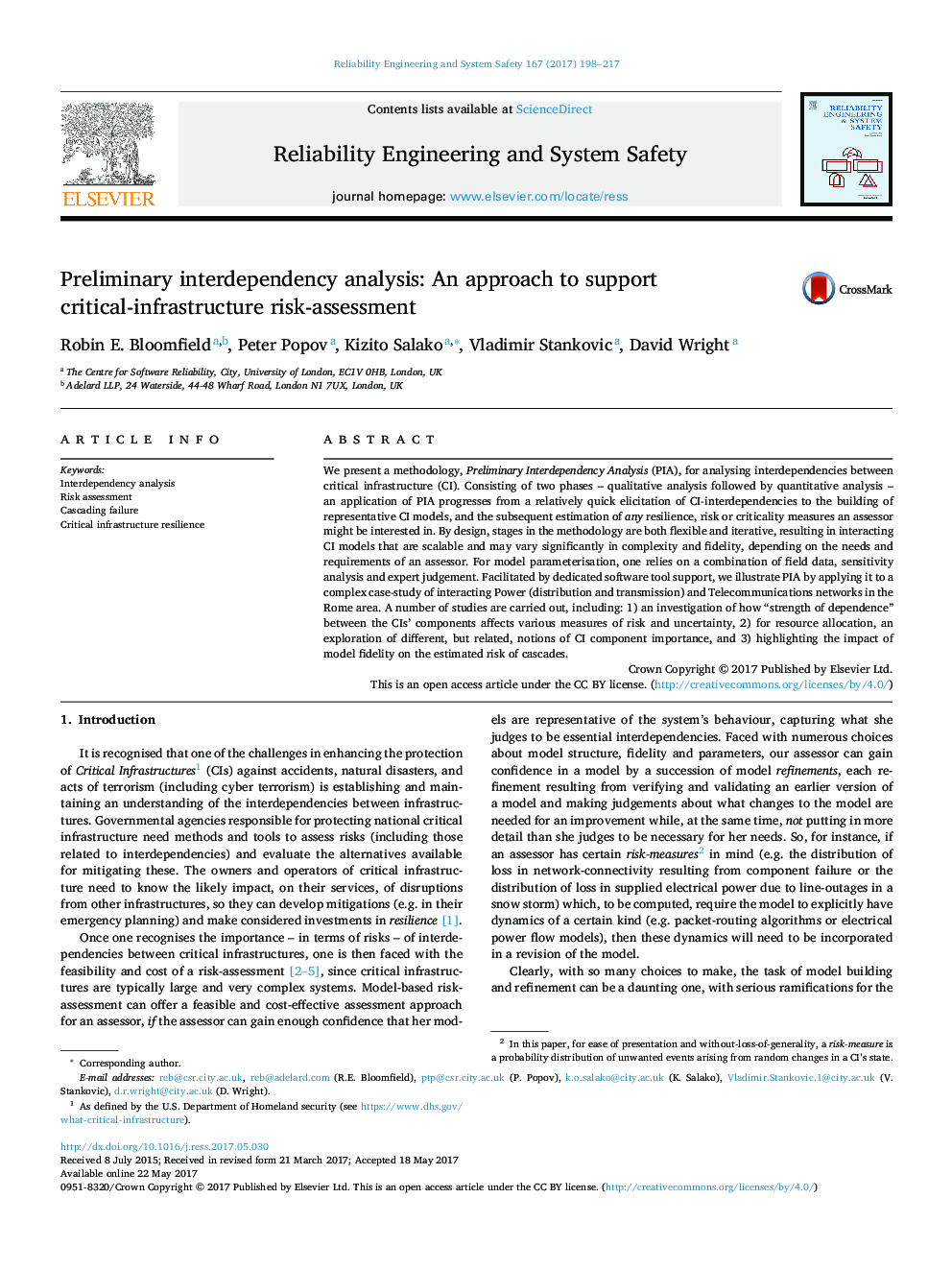| کد مقاله | کد نشریه | سال انتشار | مقاله انگلیسی | نسخه تمام متن |
|---|---|---|---|---|
| 5019478 | 1468203 | 2017 | 20 صفحه PDF | دانلود رایگان |
- Stages in PIA are, by design, flexible and iterative, supporting an assessor in the identification of interdependencies and the quantification of risk and resilience.
- PIA is applied in a sufficiently complex case-study; the risk-analyses of Power (both transmission and distribution) and Telecommunication networks in the Rome area.
- The quantitative PIA models are novel, sophisticated hybrids of stochastic and deterministic models. Of note is the mechanism of stochastic association, which provides a way of creating complex statistical dependence between components in models with an exceedingly large state-space. We illustrate an example of this kind of mechanism, and its interplay with deterministic state changes, in a dynamic model of interacting infrastructure.
- In performing interdependency analysis using PIA, our studies highlight the need for model exploration using diverse 1) levels of model abstraction/fidelity, 2) risk measures, 3) notions of criticality, and 4) model parameter values. A demonstrated awareness of this need for diversity when building trustworthy models is sorely lacking in many quantitative interdependency studies and proposed methodologies. It is very difficult to see how trust can be built in a model and its predictions without this.
We present a methodology, Preliminary Interdependency Analysis (PIA), for analysing interdependencies between critical infrastructure (CI). Consisting of two phases - qualitative analysis followed by quantitative analysis - an application of PIA progresses from a relatively quick elicitation of CI-interdependencies to the building of representative CI models, and the subsequent estimation of any resilience, risk or criticality measures an assessor might be interested in. By design, stages in the methodology are both flexible and iterative, resulting in interacting CI models that are scalable and may vary significantly in complexity and fidelity, depending on the needs and requirements of an assessor. For model parameterisation, one relies on a combination of field data, sensitivity analysis and expert judgement. Facilitated by dedicated software tool support, we illustrate PIA by applying it to a complex case-study of interacting Power (distribution and transmission) and Telecommunications networks in the Rome area. A number of studies are carried out, including: 1) an investigation of how “strength of dependence” between the CIs' components affects various measures of risk and uncertainty, 2) for resource allocation, an exploration of different, but related, notions of CI component importance, and 3) highlighting the impact of model fidelity on the estimated risk of cascades.
Journal: Reliability Engineering & System Safety - Volume 167, November 2017, Pages 198-217
